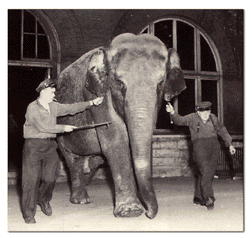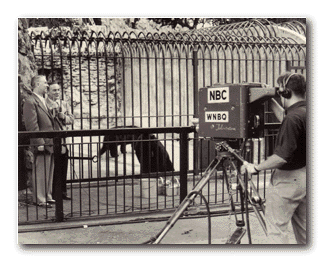 |
A gift of a pair of swans from New York's Central Park in 1868
marked the beginning of Lincoln Park Zoo's commitment to wildlife. Just
four years later the zoo's collection had grown to include buffalo, peacocks,
prairie dogs, foxes, deer, elk, wolves, eagles, a bear and a variety of
other animals. In 1889, the zoo's first elephant, "Duchess" joined
the collection along with a pair of tigers, a lion and a camel in 1889.
These were the first species not native to North America introduced to Lincoln
Park.
Today, Lincoln Park Zoo is the nation's oldest zoo and one of the most-visited
zoos welcoming millions of visitors each year. The zoo has changed vastly
over the years going from rows of sterile cages to naturalistic exhibits
and renovated landmark buildings.
|
Lincoln Park Zoo's animals and people have gained celebrity status, none
bigger than Bushman,
a gorilla who grew to more than 6 feet tall and topped the scales at 550
pounds and captured the hearts of Chicagoans.
Zoo Director Marlin Perkins, who came to Lincoln Park in 1944, is credited
with popularizing zoology and natural science with his pioneering work in
television, first with his series "Zoo Parade" and later with
"Wild Kingdom." "Zoo Parade" was filmed live at the
zoo each week and was telecast to 36 cities around the country.
In 1961, a new director replaced Perkins. He was Dr.
Lester E. Fisher, the zoo's consulting veterinarian, and he ushered
in a new era at the zoo. With the combined efforts of the Chicago Park District
and the Lincoln Park Zoological Society, Fisher embarked on one of the most
ambitious zoo rebuilding programs in the country. During his 30-year tenure
as director, nearly every zoo building was built or rebuilt.
|
 |




